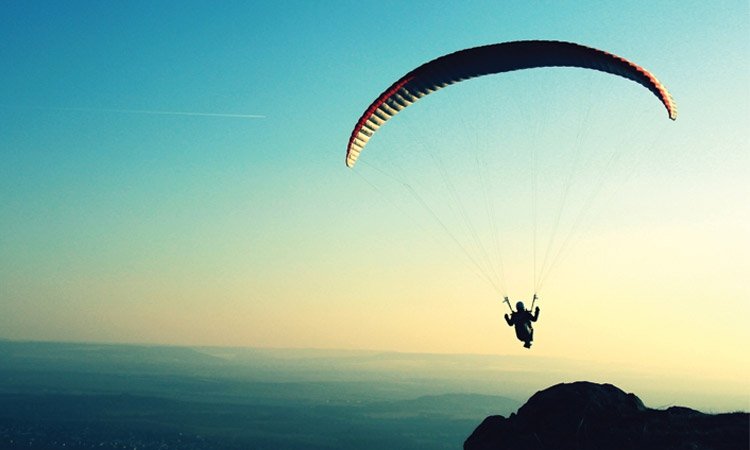Strapping on my harness and checking my gear to make sure it was secure, I held the reins tightly in my hands. The winged creature lurched, squirmed, wriggled, and writhed to free itself from its restraints and heave me into the abyss. My keepers, one at either side, were able to contain its fury, but it took all of their skill and stamina to keep it from sweeping me off my feet and carrying me up into its lair.
The voice on the radio startled me back into reality. “Hands back, palms facing up, lean forward, look straight ahead … launch position!” It was Avi, our master instructor; the mentor determined to give us the skill to defy gravity and soar, and most of all, to land safely afterwards. “Launching is optional, landing is not,” he was fond of saying. I reassured myself that all was well, remembering our instructors’ unblemished safety record.
It was the end of our paragliding course. All the theory of lift, drag, and attack we had learned about would be pointless unless I now took the leap off this hill. Just keep calm and follow instructions! I repeated as a mantra.
As I stood poised for launch, an eagle soared effortlessly overhead whirling in circles. He barely flapped his wings as he caught a rising thermal. I thought of a verse, “They will soar high on wings like eagles.”[Isaiah 40:31 NLT]
My radio crackled again. “Are you ready?”
I nodded and took a few deep breaths, trying not to panic. What had Avi told us? “Panic is one step before accidents. When you panic, your subconscious takes over and causes you to make mistakes.”
Hands back, my chute caught the wind, inflated, and pulled me back. I bent forward and looked up. Now, I was committed, there was no turning back. I knew the next step was to run. Like life, if we lack energy to move toward our goal, circumstances will begin working against us. If I lost speed, the glider would begin its own journey sideways. I had to tell it what I wanted it to do. Fly! Land me safely!
“Run!”
Two steps and I was up. That was easier than I’d thought, more like riding a ski lift than a plane. I was flying high, enjoying the majestic view of blue mountains over a clear lake. I pulled gently on the brake to turn right. It obeyed, then left and right again, then in for the landing and touchdown—not as gently as I’d hoped, but not too rough either, for a first time.
I started critiquing my landing and telling Avi how I would do better next time. “Don’t be so hard on yourself,” he chided. “All safe landings are successful landings.”
Everyone clapped. I did too. Now a “band of brothers,” we cheered each person as they landed, bonded in the fact that we had all faced our fears and won.
After savoring the moment, I struck up a conversation with our instructors, founders of a leading paragliding training school in India.
Avi, the head instructor, and his wife, Anita, had both given up lucrative corporate jobs to pursue this dream, and it was not easy going at first. I asked Anita what she felt were the main factors responsible for the success of their endeavor.
“We burned all of our bridges. Failure was not an option. It was do or die—and we weren’t interested in the dying part.”
It took several years of slogging, traveling to give presentations at corporate events or anywhere they could get an appointment. A few brave souls tried it, then news spread, and now they are flying just about every day.
I found that these entrepeneurs also had a deep spiritual side to their character. It was more than just an adrenaline rush or a risky business venture. It was an inner flight for them and they wanted to share it with others.
“Paragliding is like life,” Avi told me. “We have to overcome difficulties and face challenges. Though we can get help from others, ultimately we have to proceed on our own. We have to face our fears and let go of our doubts and just fly!”
